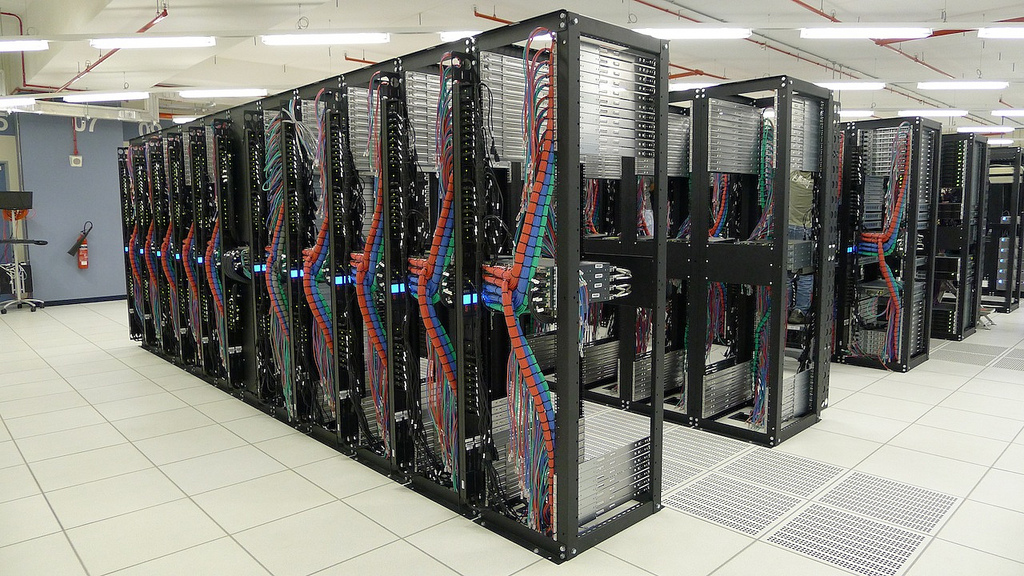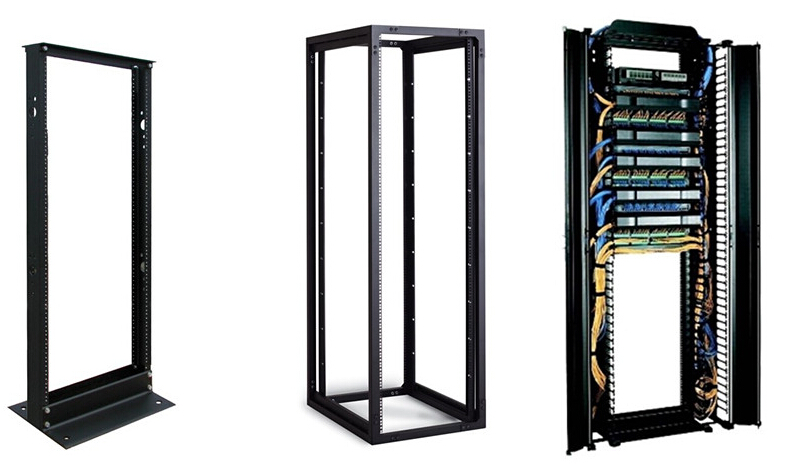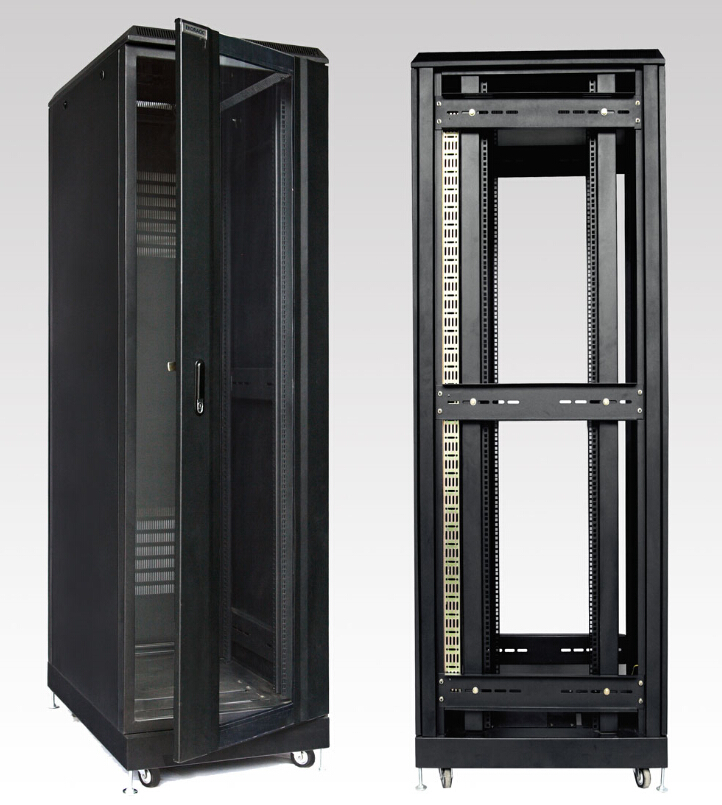Server rack functions to organize IT equipment (servers and network switches) into assembly order to make the most use of space and resources. Therefore, it can affect the availability, serviceability, flexibility and manageability of the data center to a large extent. In other words, your daily operation and maintenance rely heavily on your rack choice. Well, since not all the server racks are created equal, it is thus essential to choose the right one that matches your current needs as well as future network growth. Then, let’s see how to choose the right server rack.
What Is a Server Rack and Why We Need it?
A server rack basically consists of two or four vertical mounting rails and the supporting framework required to keep the rails in place. Typically made of steel or aluminum, rails and framework are capable of holding hundreds or even thousands of pounds of equipment. For now, the vast majority of IT applications use 19-inch racks and equipment. As the width of which is always the same, the height and depth can be various.

Be it a data center, server room or even cabinet closet, racks are always needed to accommodate IT production equipment, such as servers, storage, network switches, routers, telecommunication hardware and other devices. Server rack is designed to hold all standard 19-inch rack-mountable equipment, as long as it isn’t too deep for the cabinet or too high to fit in the available rack spaces. Moreover, server rack also holds IT infrastructures and rack accessories that support the operation of the production equipment, including UPS systems, PDUs, cable managers, KVM switches, patch panels and shelves.
Common Server Rack Types Analysis
Generally, there are three types of server rack: open frame racks, rack enclosures and wall-mount racks.
Open frame racks are just open frames—with mounting rails but no sides or doors. This kind of rack is typically used for applications that do not need the rack to perform airflow control or provide physical security. Open frame racks are optimal for network wiring closet and distribution frame applications that have high-density cabling, due to they offer flexible access and lots of open space that facilitate cable management.

Rack enclosures are also referred to as rack cabinets, they have removable front and rear doors, removable side panels and four adjustable vertical mounting rails. The front and rear design of rack enclosures achieves ample airflow for any installed equipment. Rack enclosures provide an ideal alternative for applications which require heavier or hotter equipment. And they often include additional rails to mount accessories like vertical cable managers and PDUs. Nowadays, rack enclosures have gained in much popularity in data centers and server rooms.

Wall-mount racks just do what the name indicates—they can be attached to the wall. In this case, wall-mount racks can save floor space and fit in areas where other racks cannot. They can be open frame racks or enclosed cabinets. Wall-mount racks fail to support as much weight as their counterparts since they are basically smaller than those floor-standing ones. However, by adding rolling casters, they can also accommodate floor-standing applications.

What Should I Look for a Server Rack?
There exist a dazzling array of server rack options, in terms of different heights, sizes and styles. When selecting the server rack for your installation, here are some factors to consider:
AV vs. IT-based installations: the choice should better depend on the equipment being installed. IT racks are designed for use with traditional IT equipment in which the I/O and cabling is on the front of the rack. This makes easier troubleshooting and network monitoring. AV racks, however, are typically shallower in depth, enabling a cleaner installation by using equipment with rear facing I/O so that cabling is hidden in the back.
Airflow and cooling: these two factors are critical to the performance and longevity of the equipment installed in the server rack. Depending on the airflow condition of the place where the server rack will be located, you may need to increase the rack’s cooling capability. Fortunately, multiple cooling options are available now, but remember to consider the noise level tolerated.
Equipment width: with 19-inches being the traditional standard for rack mounted network hardware, some vendors make custom sizes for other types of equipment. Make sure to check what size of server rack your equipment requires.
Security options: while there might be a great amount of expensive equipment installed on the server rack, you have always to bear security in mind. A server rack that meets the security goal is thus essential. Locking cabinet and tinted door glass can help protecting your network from prying eyes and hands.
Conclusion
Although selecting the server rack may not sound like a big decision to make, your choice can actually affect the overall performance and operation of the network. The right type of server rack that meets your installation demand helps you improve power protection, cooling, cable management, and physical security. Taking the above factors into consideration and thinking thoroughly before making the choice.

No comments:
Post a Comment